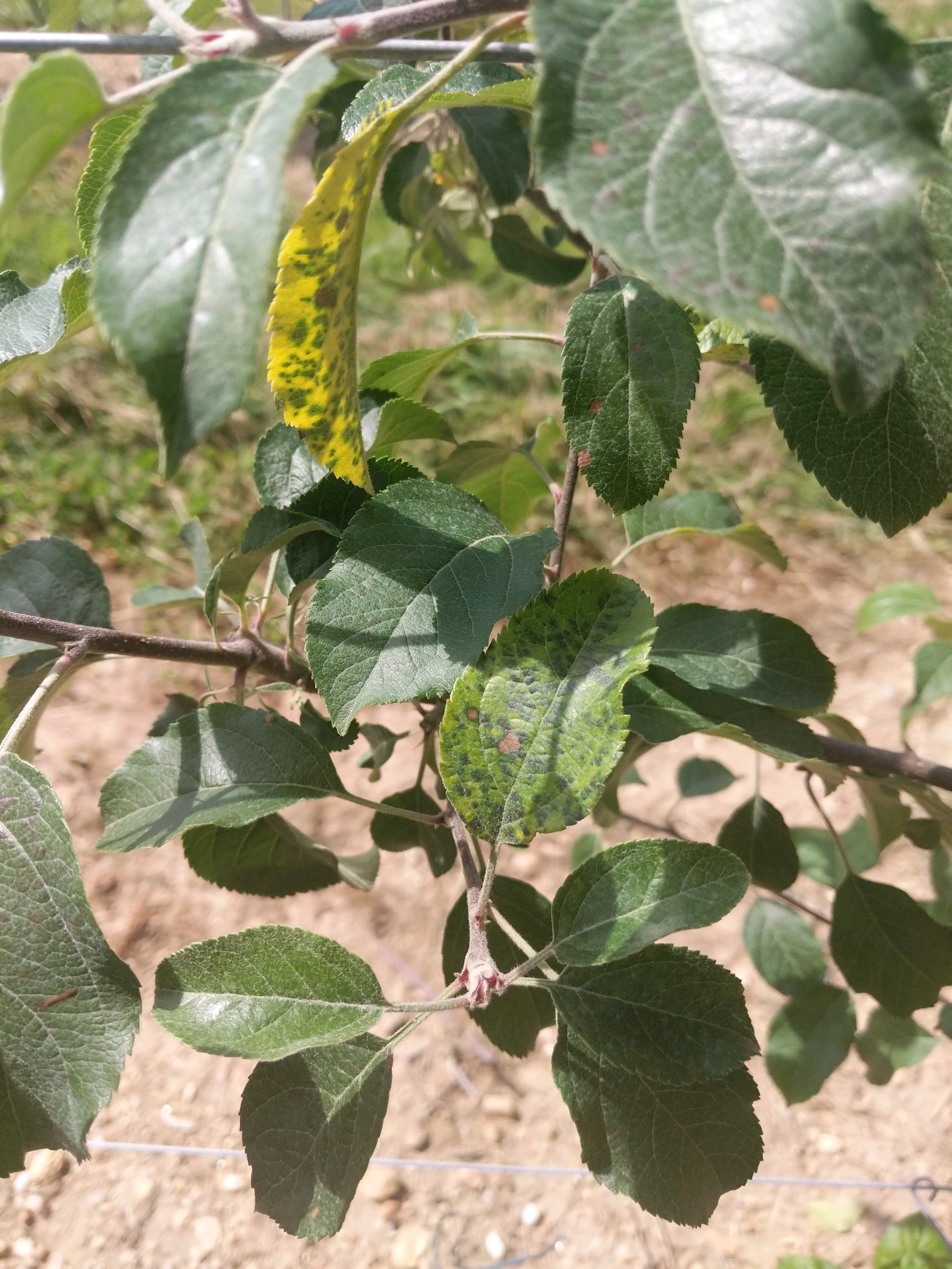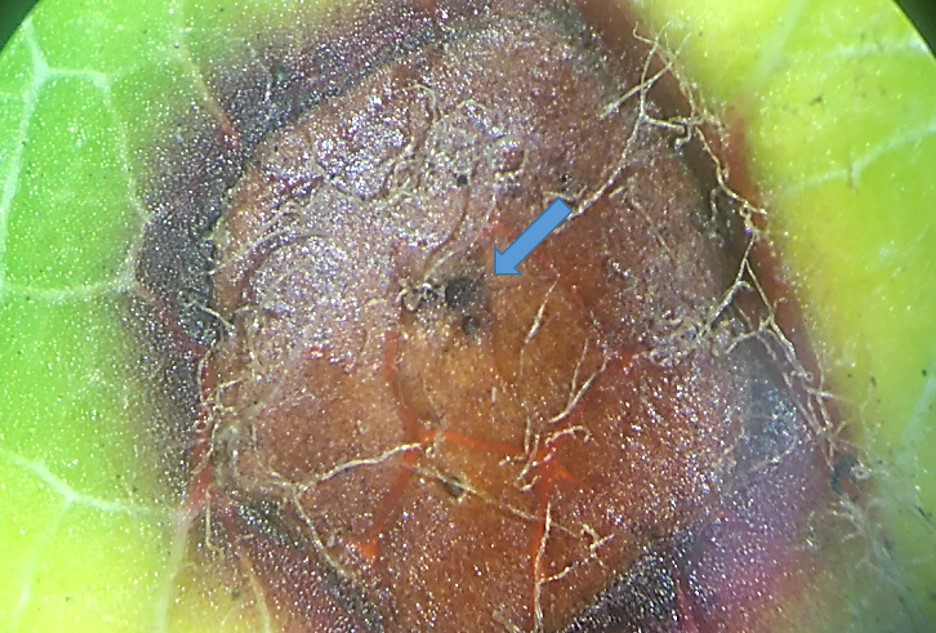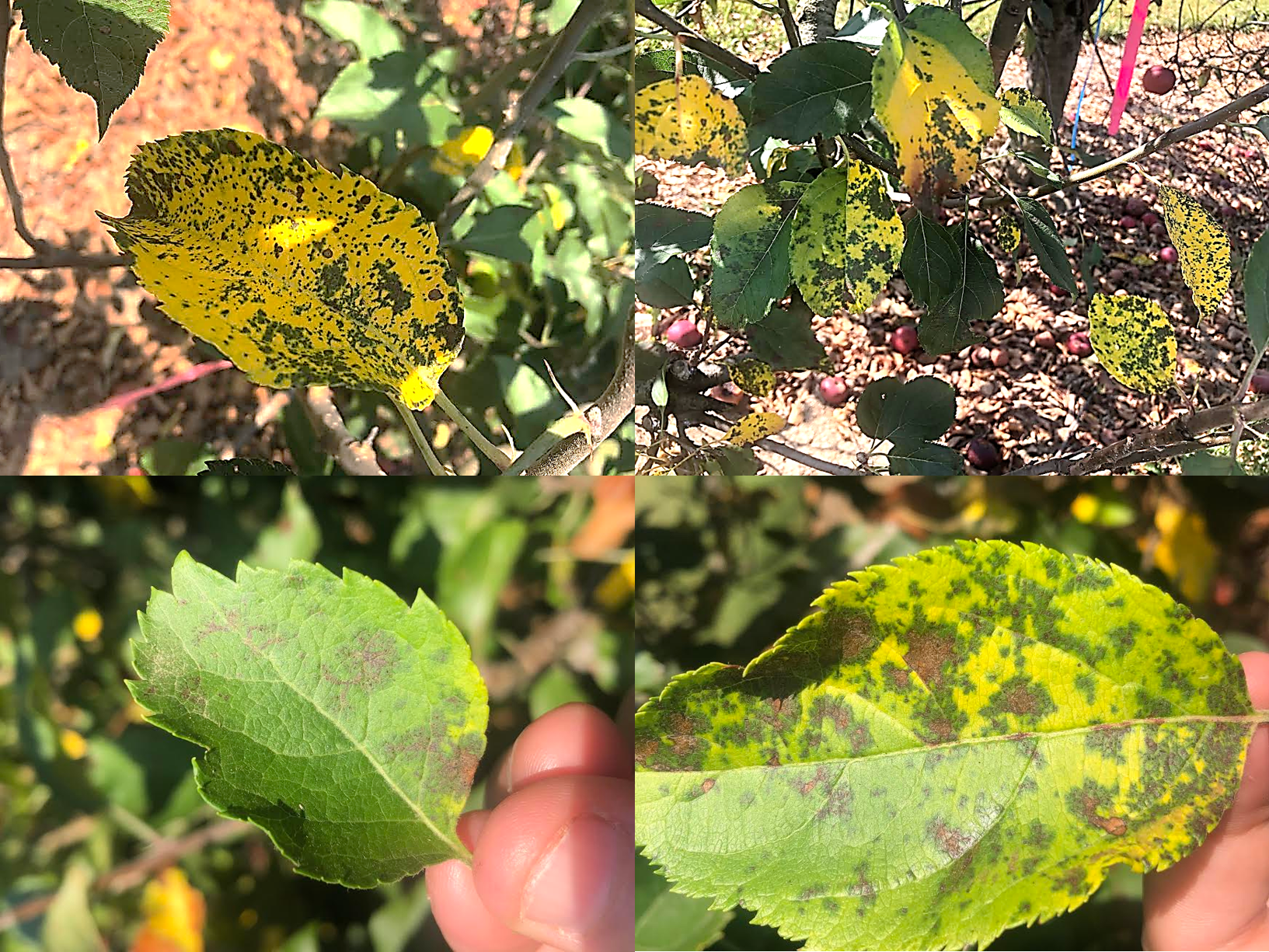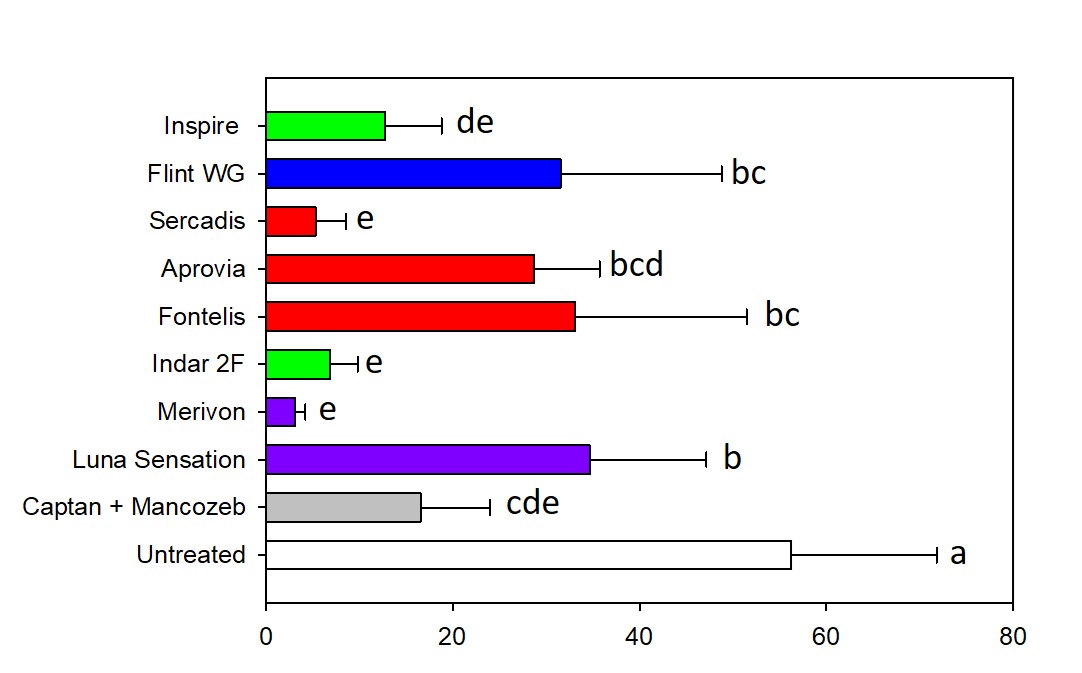Apple Disease Update: Week of June 12, 2022
go.ncsu.edu/readext?870463
en Español / em Português
El inglés es el idioma de control de esta página. En la medida en que haya algún conflicto entre la traducción al inglés y la traducción, el inglés prevalece.
Al hacer clic en el enlace de traducción se activa un servicio de traducción gratuito para convertir la página al español. Al igual que con cualquier traducción por Internet, la conversión no es sensible al contexto y puede que no traduzca el texto en su significado original. NC State Extension no garantiza la exactitud del texto traducido. Por favor, tenga en cuenta que algunas aplicaciones y/o servicios pueden no funcionar como se espera cuando se traducen.
Português
Inglês é o idioma de controle desta página. Na medida que haja algum conflito entre o texto original em Inglês e a tradução, o Inglês prevalece.
Ao clicar no link de tradução, um serviço gratuito de tradução será ativado para converter a página para o Português. Como em qualquer tradução pela internet, a conversão não é sensivel ao contexto e pode não ocorrer a tradução para o significado orginal. O serviço de Extensão da Carolina do Norte (NC State Extension) não garante a exatidão do texto traduzido. Por favor, observe que algumas funções ou serviços podem não funcionar como esperado após a tradução.
English
English is the controlling language of this page. To the extent there is any conflict between the English text and the translation, English controls.
Clicking on the translation link activates a free translation service to convert the page to Spanish. As with any Internet translation, the conversion is not context-sensitive and may not translate the text to its original meaning. NC State Extension does not guarantee the accuracy of the translated text. Please note that some applications and/or services may not function as expected when translated.
Collapse ▲First off, thanks to all of our speakers, sponsors, and attendees who attended the 2022 S.E. Apple Conference last week. The field day was particularly exciting and informative and from a pathologist’s perspective, slightly surprising in regards to some of the occasional leaf spots I saw! In retrospect, my post last week was quite timely! Marssonina leaf blotch is appearing relatively early this season which helps me to better understand the results of our early season fungicide programs in previous years. A few years ago a posted FAQs on this emerging disease. Below is a “Cliff Notes” version with a few updates:
If you have a hand lens present (or a microscope), you may be able to see small, black fungal structures on the lesions called acervuli. The acervuli contain the conidia (asexual spores) of the MLB pathogen.
As the disease progresses, leaf tissue surrounding the lesion will becoming chlorotic (yellow) and premature defoliation occurs as early as late June.
Mycelium or thread-like structures of the fungus may also appear on older lesions.
Can MLB cause damage to fruit?
Yes, but so far I haven’t seen any symptoms on fruit in NC, even those with severe leaf infections.
When should we be protecting against infections?
In 2021, we also evaluated early season programs at the same application timings. I didn’t have time today to put the results into a graph but click on this link for fungicide trial results:
Marssonina table field trial 2021
Basically, early season applications of Cevya, Captozeb, and Miravis reduced MLB by 65-70%. Again, in both trials these trees were not sprayed after 2nd cover with any fungicide. Imagine how a full fungicide program would perform?
For this weeks fungicide applications, I would suggest continuing with your captan alone, or captan + ziram, or captan+ phos. acid program. IF you have not made two applications yet of any of the following: Merivon, Luna Sensation, Pristine, or Flint, it may be a good idea to include one of these materials with a half rate of captan for your weekly spray. Looking at the forecast, it looks like the heat and wet will continue for a few days….







